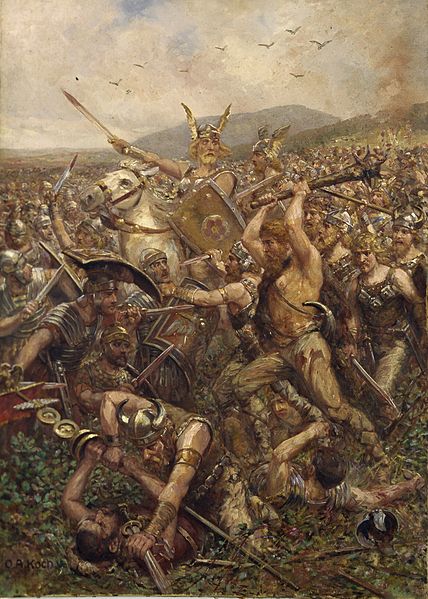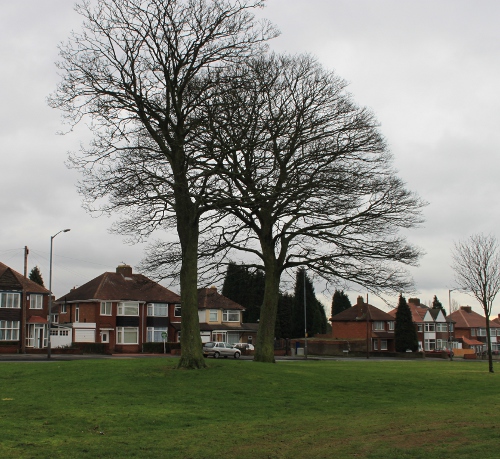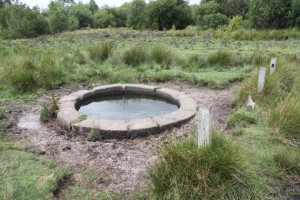The 9th of September in the year 9 AD is of great significant to the history of both the Roman armies and the Germanic tribes. On this day an alliance of six German tribes annihilated three entire legions of Romans along with several cohorts of auxillaries in a battle deep in the vast forest that covered and still cover much of Germany. It was a battle that at times has been used by the Germans in the same way that Britain might talk of Waterloo or Agincourt when stiring nationalist sentiments.
Roman Expansion in Germany
The Romans had been pushing out across from the Rhine, conquering tribe after tribe for 20 years in a series of campaigns. Thus in 9 AD the Roman Empire controlled, directly or via subservient and allied states, a huge area of western Germany as far east as the River Elbe.
The Romans had been presented as a hostage and tribute the young son of a German tribal leader. This boy was Arminius. He was taken to Rome and raised as a Roman, even being given a Roman military education and a rank. Secertly though Arminius was an enemy of Rome and when he returned to the Rhine and became a trusted advisor to Varus, the Roman commander, he began putting together plans for a betrayal. He contacted the various tribal leaders under the dominance of Rome and found that due to Roman brutality there was a strong appetite for a rebellion.

Statue of Arminius
When all was ready Arminius fed Varus a false report of an uprising North of the Ruhr river. Varus mobilized all his available troops – maybe 36,000 men and began to march to the area Arminius suggested. He was able to lead Varus along a path that led deep into the Teutoburg Forest near Osnabruck.
The path was narrow and Varus was obliged to stretch out his formation over 20km. This was the moment Arminius and his allies had been waiting for.

The Teutoburg forest
Around 30,000 German tribes men emerged from the forested and assaulted the Romans. The Battle would last 3 days with the Romans managing to build over night fortresses and march on. IN the end the path they followed brought them in front of another fortification – but this time built (at the suggestion of the Roman trained Arminius) across the Roman path. Assaults on this fortification failed and the Roman army broke up in dis-array with victorious Germans running amock amongst them.

Many Romans took their own lives including Varus but hundreds were taken prisoner. (Some being eventually rescued by the Romans in a later raid 40 years later!)
Aftermath
The battle – leading to the loss of three legions including their eagles and 36,000 men – crushed Roman authority east of the Rhine. Virtually all the territory they had taken was lost. Augustus Caeser was distrught – apparently banging his head against a wall and shouting ‘Quintilius Varus, give me back my legions!’.
The Romans would attack again east of the Rhine about 5 years later and exact terrible revenge in a number of bloody raids. They would retrieve their lost eagles, rescue captives and even bury the bones of the dead they found strewn over the battlefield in the forest BUT they never again conquered these lands.
Nationalism
Over the centuries THIS battle was been evoked by the Germans at moments when a sense of German nationhood was desirable. In 1808 with much of Germany under the control of the Eagles of Napoleon’s French Empire plays were made of this battle – and it was clear that although the enemy was Rome a parallel was being made with the French oppressor.
The battle was later used in propagana in the wars of German unification against Austria and France in the 1860s and 1870s BUT in the post WW2 era has been ignored as the Germans tended to avoid overt displays of national pride.







